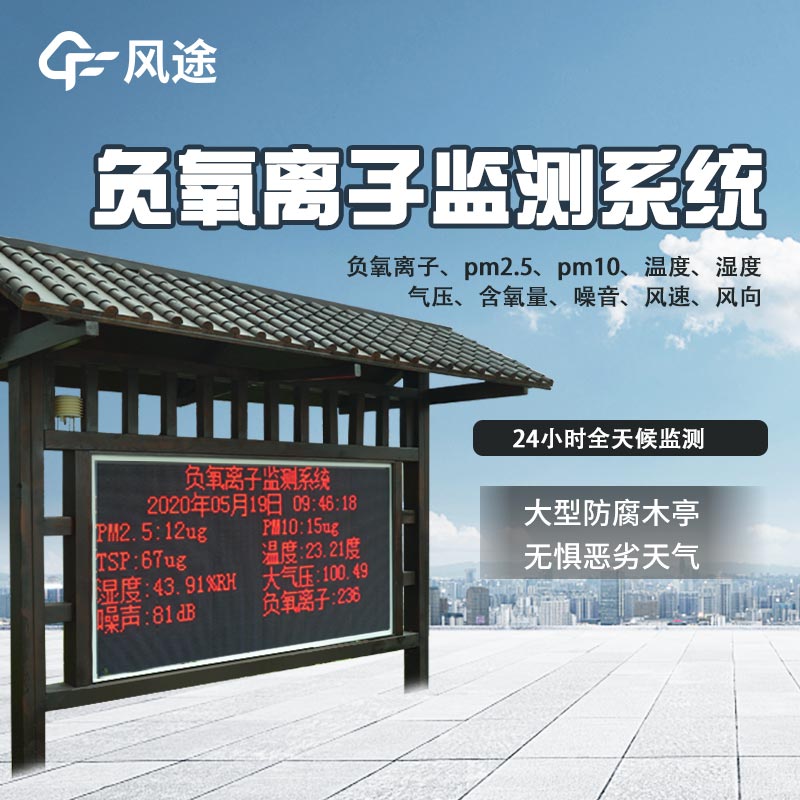Tianyi Sensor IOT Technology Co., Ltd
Sales Manager:Ms. Emily Wang
Cel,Whatsapp,Wechat:+86 15898932201
Email:info@fengtutec.com
Add:No. 155 Optoelectronic Industry Accelerator, Gaoxin District, Weifang, Shandong, China

Sales Manager:Ms. Emily Wang
Cel,Whatsapp,Wechat:+86 15898932201
Email:info@fengtutec.com
Add:No. 155 Optoelectronic Industry Accelerator, Gaoxin District, Weifang, Shandong, China
time:2025-06-20 09:04:16 source:Weather Station viewed:128 time
With the improvement of people's living standards, there is growing emphasis on health and the ecological environment. Among various ecological indicators, negative oxygen ions have become an important symbol for measuring air quality, as they can positively influence the body's physiological activities through the human nervous system and blood circulation.
In scenic areas famous for natural landscapes such as Huangshan and Zhangjiajie, fresh air is a key attraction for tourists. To fully demonstrate the air quality advantages, negative oxygen ion concentration monitoring weather stations have become essential facilities.
The Negative Oxygen Ion Monitoring Station employs the internationally recognized "suction-type capacitive collection method." A polarization voltage is applied to the polarization plate of the ion sensor, allowing the measured air to pass through the sensor at a constant speed. This captures negative ions, processes the charge, and accurately calculates the negative ion concentration. In addition to monitoring negative oxygen ions, it can simultaneously detect meteorological elements and pollutant indicators such as air temperature, humidity, wind speed, wind direction, PM2.5, and PM10, providing comprehensive environmental data for scenic areas.
The equipment consists of an air negative oxygen ion concentration sensor, temperature and humidity sensor, data collector, wireless GPRS communication module, and power control system. The integrated design of the sensor, without mechanical displacement, ensures high precision and long service life. The data collector efficiently processes data from each sensor, while the wireless GPRS communication module enables stable data transmission even in remote scenic areas.
The supporting software system has functions for data reception, analysis and statistics, query, curve analysis, and web publishing. Scenic area managers can view real-time data and historical records through computers or mobile phones to analyze the changing patterns of air quality. There is also an LED display that shows information such as negative oxygen ion concentration to tourists in real time.
In practical applications, the negative oxygen ion concentration monitoring weather station not only helps scenic areas scientifically plan protection measures, such as rationally planning tourist routes, but also enhances the tourist experience.

In high-risk industries such as chemical plants, production safety is not only crucial for business operations but also directly related to personnel safety and environmental protection. These locations often contain flammable and explosive gases or dust, where conventional weather monitoring equipm...
An ultrasonic weather station is a highly integrated meteorological monitoring device that utilizes modern ultrasonic detection technology. It emits ultrasonic waves and measures changes in their propagation speed through the air to accurately calculate wind speed and direction, completely eliminati...
Measuring river water levels is necessary for flood control and disaster reduction. Through real-time monitoring of river water levels, we can timely grasp the changes in water levels, issue warnings before floods arrive, strive for time for personnel evacuation and property transfer, and minimize t...
Microwaves refer to electromagnetic waves with frequencies ranging from 300MHz to 300GHz and wavelengths from 1 millimeter to 1 meter. Due to their high frequency and short wavelength, they have strong directivity and penetrating power, enabling stable propagation under different meteorological cond...